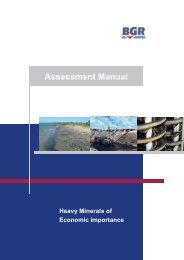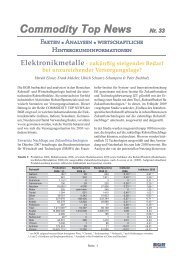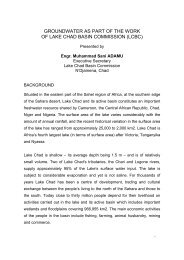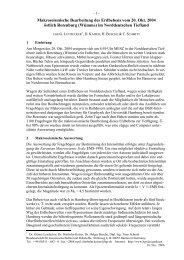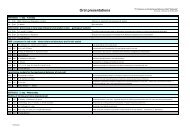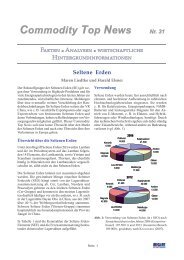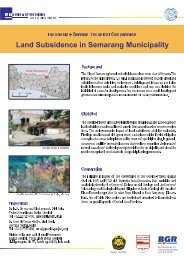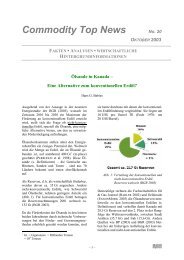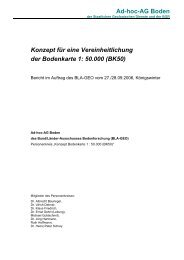THE SMOOTH SOUNDING GRAPH. A Manual for Field Work ... - BGR
THE SMOOTH SOUNDING GRAPH. A Manual for Field Work ... - BGR
THE SMOOTH SOUNDING GRAPH. A Manual for Field Work ... - BGR
You also want an ePaper? Increase the reach of your titles
YUMPU automatically turns print PDFs into web optimized ePapers that Google loves.
2. <strong>Field</strong> activities<br />
31<br />
This second chapter should be a guide <strong>for</strong> field work based on what has<br />
been discussed in the first chapter. It contains advices to the field crew<br />
how to go on to supply the interpreter with optimal data, i.e. the smooth<br />
sounding graphs without errors. From this aim the following - of course<br />
important - points will not be discussed.<br />
1. Instruments: There is a large variety of instruments offered at the<br />
market to carry out direct current resistivity measurements: power supply<br />
by batteries, generators, D.C. amplifiers to feed the current electrodes A<br />
and B, voltmeters as compensators (zero-instruments) or direct voltage<br />
amplifiers to get the voltage between the potential electrodes M and N.<br />
The advices in this manual are independent of the kind of instrument. But<br />
<strong>for</strong> simplicity a car-borne equipment is taken <strong>for</strong> demonstration. The ad-<br />
vices can easily be trans<strong>for</strong>med to portable equipments.<br />
2. Safety: As high voltage power (200 V and more) is used safety is a<br />
very severe problem. The assistants at the current electrodes A and B can<br />
be provided by rubber gloves and boots, the steel electrodes can be insu-<br />
lated, an electrical grounding control can be installed at the instrument<br />
etc. Here general advices can of course not be given because the danger<br />
depends on the local situation and the safety is within the responsibility of<br />
the chief surveyor.



